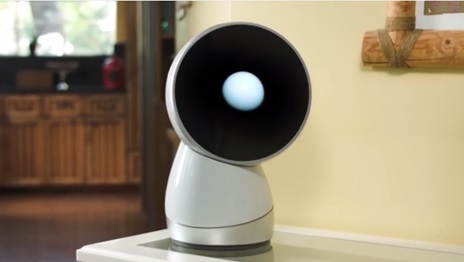Jibo the Family Robot Might Be Oddly Charming, or Just Plain Odd
The roboticist Cynthia Breazeal has announced a product designed to fundamentally alter the way we interact with technology: the “world’s first family robot,” called Jibo.

Resembling a static but animated lampshade (with a slightly Hal-like, glowing-orb face), Jibo is meant to perform relatively simple tasks like capturing video, relaying messages, and turning light switches on and off. The plan is also let outside developers create apps that interface with Jibo. There’s nothing particularly special about the functionality promised, but if the interface works as advertised (see the promotional video) it will be extraordinary. There are no conventional buttons, swipes, or commands to learn with Jibo; you’d simply talk to it as if it were a tiny robotic person.
Jibo promises to let us experience technology in an altogether more natural way, and there’s good reason to believe such an interface would be enjoyable and compelling to use (see “An AI Pal that’s Better than ‘Her’”). A more natural way of controlling consumer devices could certainly prove handy as smart appliances begin multiplying in our homes—potentially simplifying a mess of different competing interfaces.
But Jibo’s impact will depend entirely on how well it grapples with the complexities of human communication and the subtleties of social interaction.
Some technology companies have already begun exploring more “sociable” interfaces, with products such as Siri, Apple’s voice-activated assistant. However, slow progress highlights the difficulty of designing a machine to carry on a convincing conversation with person while respecting social nuance (see “Social Intelligence”). So if Jibo’s voice interface is too limited, or if it fails to respond to social cues correctly, it will quickly prove more weird and bothersome than brilliant.
Nonetheless, were Jibo, or something similar, to work really well it could prove irresistible. Breazeal’s academic work advanced the power of harnessing social signals in robots several decades ago. Her Kismet robot had an expressive eyes, ears, and lips—designed to elicit and respond to emotion in human users, and Breazeal and colleagues found that such “sociable machines” could elicit surprisingly powerful effects on the humans interacting with them.
Today Kismet can be found in the MIT Museum here in Cambridge, Massachusetts, and although it sits motionless behind a glass pane, it’s hard not to feel a little affection when you look in its kooky, grinning face. Provoking a similar effect, whilst also serving as a useful home assistant, however, will be a big job for Jibo.
Keep Reading
Most Popular
Large language models can do jaw-dropping things. But nobody knows exactly why.
And that's a problem. Figuring it out is one of the biggest scientific puzzles of our time and a crucial step towards controlling more powerful future models.
How scientists traced a mysterious covid case back to six toilets
When wastewater surveillance turns into a hunt for a single infected individual, the ethics get tricky.
The problem with plug-in hybrids? Their drivers.
Plug-in hybrids are often sold as a transition to EVs, but new data from Europe shows we’re still underestimating the emissions they produce.
Stay connected
Get the latest updates from
MIT Technology Review
Discover special offers, top stories, upcoming events, and more.